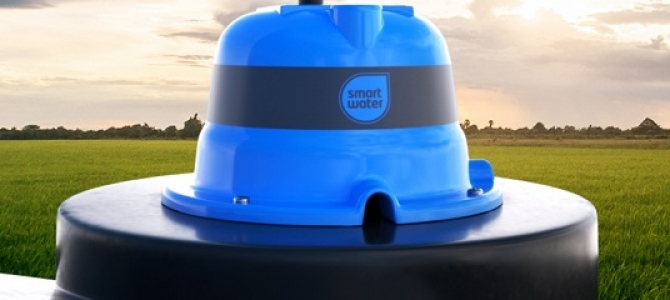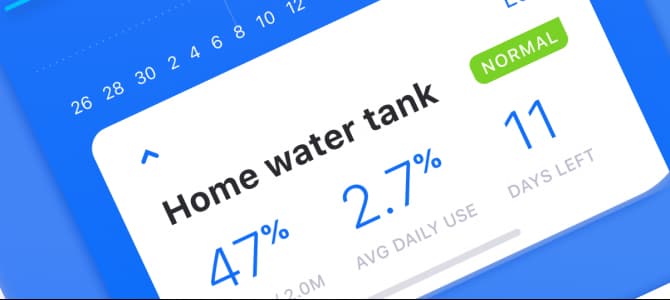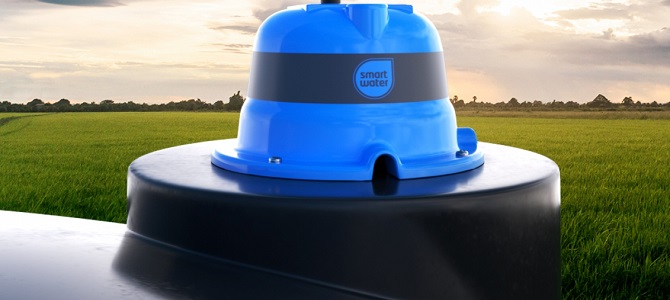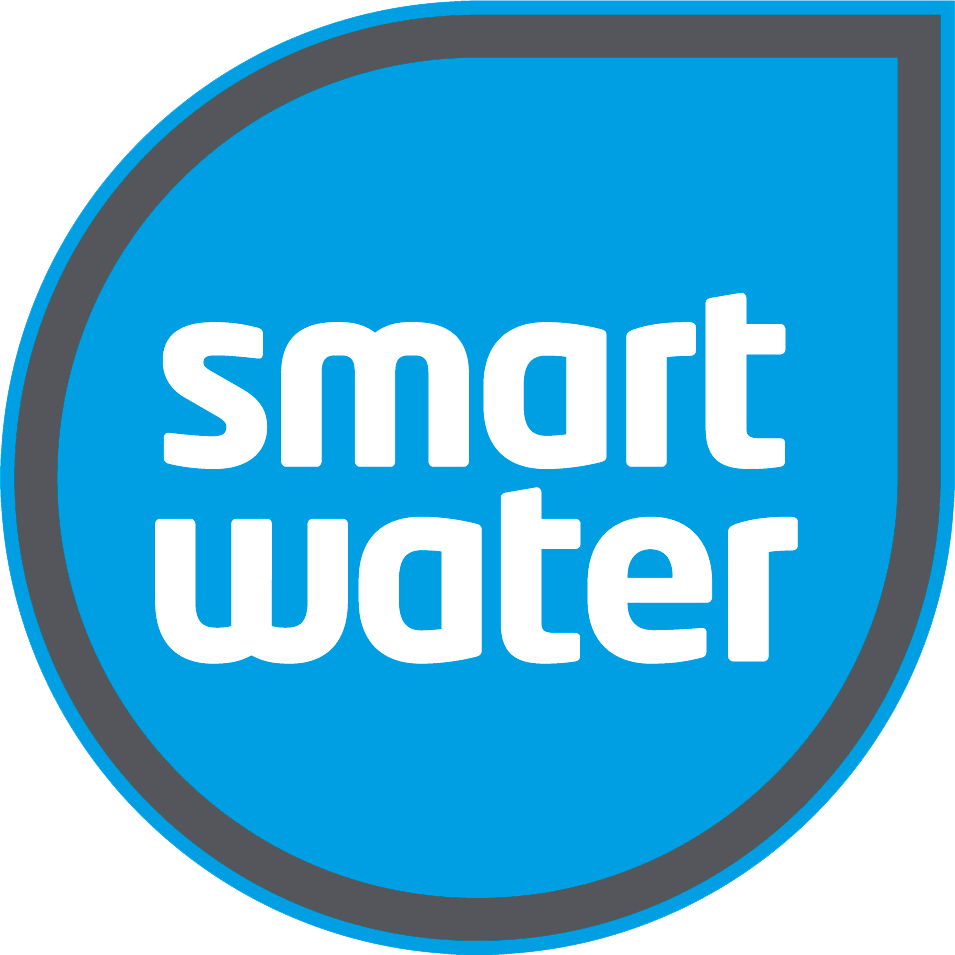 Shopping Cart
Shopping Cart
12 July 2024
Effortless Efficiency with Remote Monitoring of Rainwater Tanks

Picture this. You no longer need to climb precarious ladders or trek across vast distances to manually check water tank levels. Gone are the days of uncertainty and guesswork, replaced by real-time data and seamless management. Welcome to the world of remote monitoring for rainwater tanks—a game-changer for farmers, eco-conscious homeowners, property managers, and sustainability enthusiasts. This guide will take you through the ins and outs of this revolutionary technology, its benefits, and how you can make the most out of it.
The Rise of Remote Monitoring Technology in Rainwater Tanks
In today's fast-paced world, technology continues to redefine our everyday lives, and water management is no exception. Remote monitoring systems for rainwater tanks have emerged as a vital tool in ensuring efficient water use and management. These systems utilise smart indicators to provide real-time data on water levels, pressure, and temperature, enabling proactive management and conservation.
The increasing adoption of remote monitoring technology is driven by its ability to offer insights that traditional methods cannot match. By providing constant readings, it eliminates the need for periodic checks and minimises gaps in data. This continuous stream of information allows users to identify potential issues before they escalate into costly emergencies, ensuring a more efficient and effective water management system.
Environmental and Cost-Saving Benefits

Efficient Water Use
Water scarcity is a growing concern worldwide. According to a UN report, nearly half of the world's population will be living in areas experiencing water scarcity by 2030. Remote monitoring plays a crucial role in addressing this issue by optimising water usage and reducing wastage.
Remote systems provide real-time insights into water levels, enabling users to make informed decisions about refilling schedules and water conservation measures. This proactive approach helps in identifying and mitigating potential leaks, ensuring that every drop of water is used effectively.
Cost Reduction
One of the significant advantages of remote monitoring systems is the substantial cost savings they offer. By eliminating the need for manual checks, these systems save time and manpower, translating into significant cost reductions. Additionally, early detection of leaks prevents water loss and potential damage to property, further minimising expenses.
A study by the American Water Works Association found that utilities that implemented data-driven leak detection programs reduced losses by an average of 15%. This demonstrates the potential cost-saving benefits of integrating remote monitoring technology into water management practices.
Enhanced Sustainability
Beyond cost savings and efficient water use, remote monitoring systems contribute to broader sustainability goals. By promoting responsible water management, these systems help conserve a precious resource and minimise environmental impact. This aligns with the values of eco-conscious homeowners and property managers committed to sustainable living.
How Remote Monitoring Works

Real-Time Data Collection
Remote monitoring systems utilise sensors installed in rainwater tanks to collect real-time data on various parameters such as water levels, pressure, and temperature. These sensors transmit the data to a central monitoring system, which can be accessed remotely via a smartphone or computer.
The continuous stream of real-time data allows users to monitor their water tanks from anywhere, providing peace of mind and eliminating the need for manual checks. This constant oversight ensures that any issues can be identified and addressed promptly.
User-Friendly Interfaces
Modern remote monitoring systems come with user-friendly interfaces that make it easy for users to access and interpret the data. These interfaces provide visual representations of water levels and other parameters, allowing users to quickly understand the status of their tanks.
In addition to real-time data, these systems often include historical data and trend analysis features. This enables users to track changes over time and make data-driven decisions about water management.
Automated Alerts and Notifications
One of the standout features of remote monitoring systems is their ability to send automated alerts and notifications. Users can set thresholds for various parameters, and the system will send notifications if any parameter falls outside the predefined range.
For example, if the water level drops below a certain point, the system can send an alert to prompt a refill. Similarly, if a leak is detected, the system can notify the user immediately, allowing for swift action to prevent water loss and potential damage.
Selecting the Right Remote Monitoring System
Assessing Your Needs
Choosing the right remote monitoring system for your rainwater tank involves assessing your specific needs and requirements. Consider factors such as the size of your tank, the parameters you want to monitor, and any additional features you may need.
For smaller tanks, a basic system that monitors water levels may be sufficient. However, for larger tanks or more complex setups, you may need a system that offers additional features such as pressure and temperature monitoring, trend analysis, and automated alerts.
Compatibility and Integration
Ensure that the remote monitoring system you choose is compatible with your existing setup. Some systems may require specific sensors or equipment, so it's essential to verify compatibility before making a purchase.
Additionally, consider how the system integrates with other smart home or property management systems you may have. Seamless integration can enhance the overall functionality and ease of use of your remote monitoring setup.
Budget Considerations
Remote monitoring systems come in a range of prices, so it's essential to consider your budget when making a decision. While more advanced systems may offer additional features, they can also come with a higher price tag.
However, it's important to weigh the initial investment against the potential cost savings and benefits. In many cases, the long-term savings from reduced water loss and damage prevention can justify the initial expense.
Smart Water Tank Monitoring System

At Smart Water, we have engineered a Water Tank Monitoring System that is not only state-of-the-art but is also easy to install and affordable. Boasting the latest wireless technology, powerful LoRa wireless communications give the system the horsepower to overcome the most challenging installations. Line of sight ranges of up to 25km have been achieved in testing.
All components contained in our water tank level indicator kit have been engineered to extremely high-quality standards. As the leader in the research and development of water tank monitoring systems, Smart Water ensures its products are designed for continual long-term use against the most extreme environments. Marine grade UV resistant materials are used throughout and we back this up with a comprehenive 2 year warranty.
Our Smart Water Tank Monitoring System can monitor up to twelve separate tanks making them practical for commercial use as well as domestic. Available in The USA, Canada, New Zealand, Australia and the Bahamas, the Smart Water system is one of the leading water tank monitoring systems in the world.
Future Trends and Innovations in Rainwater Tank Monitoring
Integration with AI and Machine Learning
As technology continues to evolve, future remote monitoring systems are expected to integrate with Artificial Intelligence (AI) and Machine Learning (ML). These advancements will enable systems to analyse data more effectively and make predictive recommendations.
For example, an AI-powered system could analyse historical data and weather forecasts to predict future water needs and automatically trigger refills or adjust irrigation schedules. This proactive approach will further enhance the efficiency and effectiveness of water management.
Enhanced Connectivity and IoT Integration
The Internet of Things (IoT) is set to play a significant role in the future of remote monitoring. Enhanced connectivity and IoT integration will enable more seamless communication between devices and systems, providing a more comprehensive and integrated approach to water management.
For example, remote monitoring systems could be integrated with smart home devices, allowing users to control and manage their water tanks through voice commands or automated routines. This increased connectivity will make remote monitoring even more convenient and user-friendly.
Sustainable and Eco-Friendly Solutions
Future innovations in remote monitoring are also expected to focus on sustainability and eco-friendliness. This includes the development of energy-efficient sensors and systems that minimize environmental impact.
Additionally, future systems may incorporate renewable energy sources such as solar power, further enhancing their sustainability credentials. These advancements will align with the values of eco-conscious homeowners and property managers committed to sustainable living.
Conclusion
Remote monitoring of rainwater tanks represents a significant advancement in water management technology. By providing real-time data, automated alerts, and user-friendly interfaces, these systems offer numerous benefits for eco-conscious homeowners, property managers, and sustainability enthusiasts.
From cost savings and efficient water use to enhanced sustainability, remote monitoring systems play a crucial role in promoting responsible water management. As technology continues to evolve, future innovations will further enhance the capabilities and benefits of these systems, making them an indispensable tool in the quest for sustainability and efficiency.
If you're ready to take your water management to the next level, consider investing in a remote monitoring system for your rainwater tank. Join the growing community of users who are harnessing the power of technology to safeguard a precious resource and ensure a sustainable future.
Frequently Asked Questions
What is a rainwater tank remote monitoring system and how does it work?
A rainwater tank remote monitoring system uses sensors to track water levels, pressure, and temperature in real-time. Data is sent to a smartphone or computer, allowing users to monitor their tanks from anywhere, receive automated alerts, and make informed decisions to optimize water use and prevent leaks.
What are the benefits of using remote monitoring for rainwater tanks?
Remote monitoring systems provide efficient water use, cost savings, and enhanced sustainability. They help detect leaks early, reduce manual checks, save time and money, and support eco-friendly water management practices for homeowners and property managers.
How do I choose the right remote monitoring system for my rainwater tank?
When selecting a system, consider your tank size, the parameters you want to monitor (e.g., water levels, pressure, temperature), compatibility with existing equipment, and your budget. Advanced systems may offer features like automated alerts, trend analysis, and integration with smart home devices.
